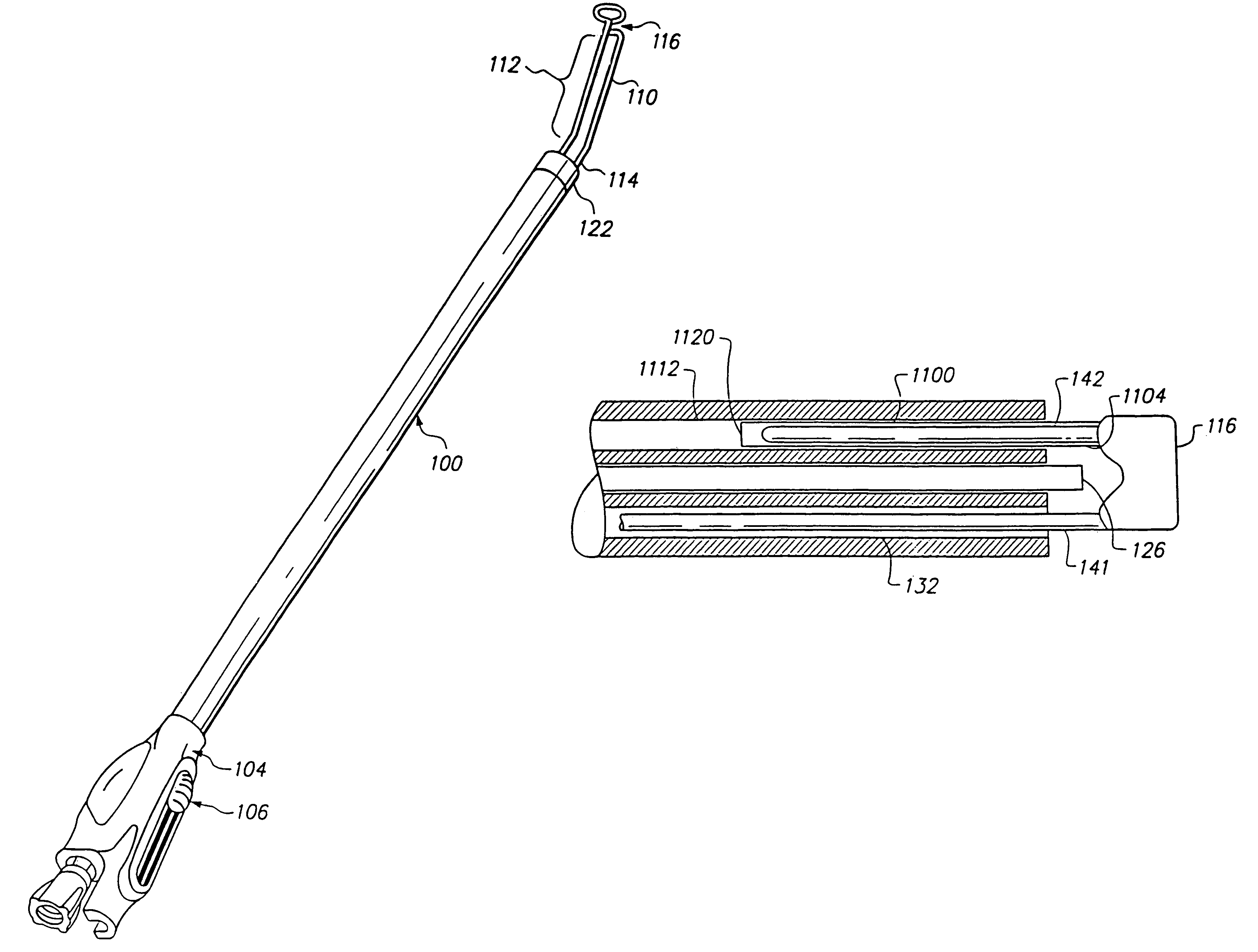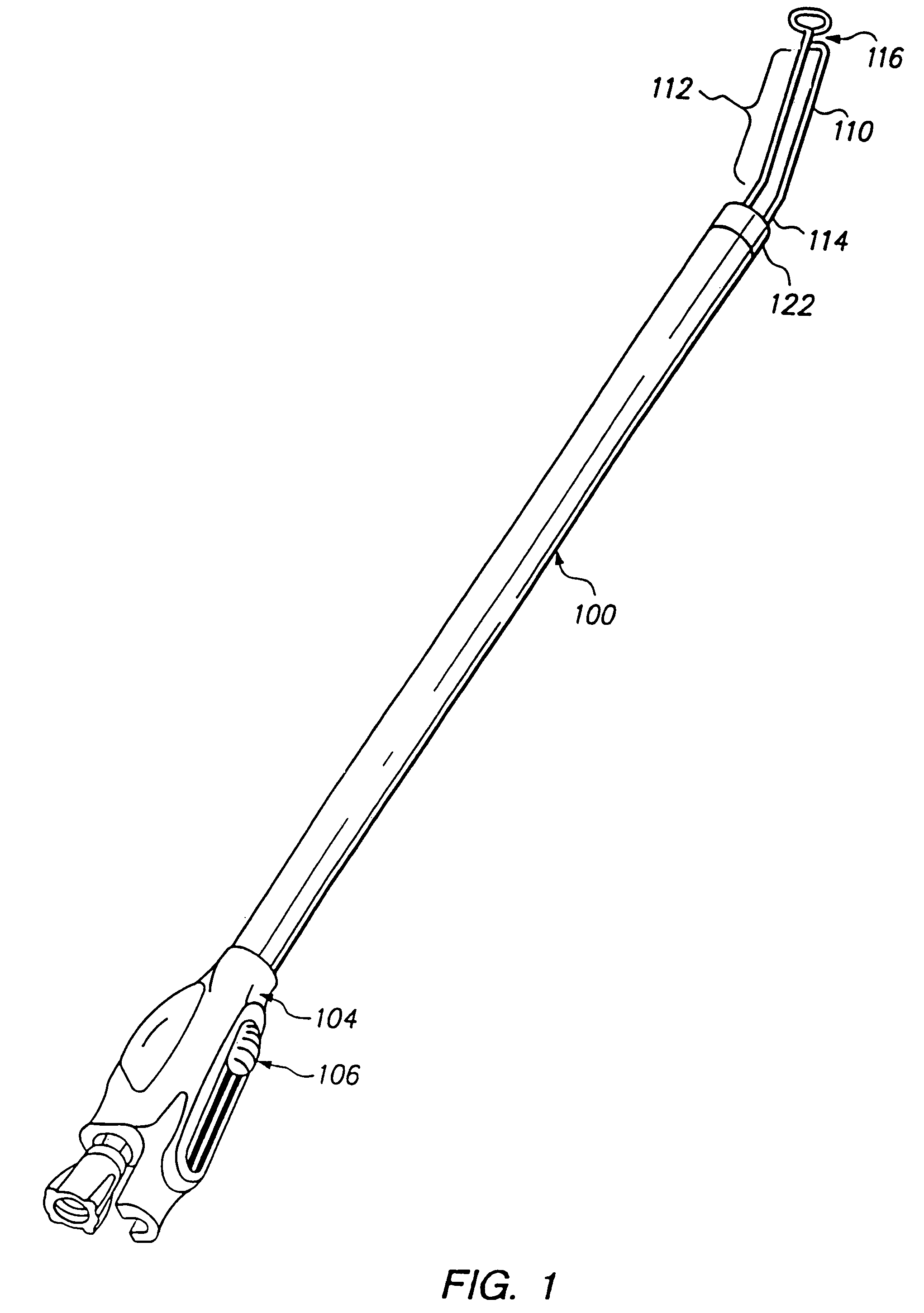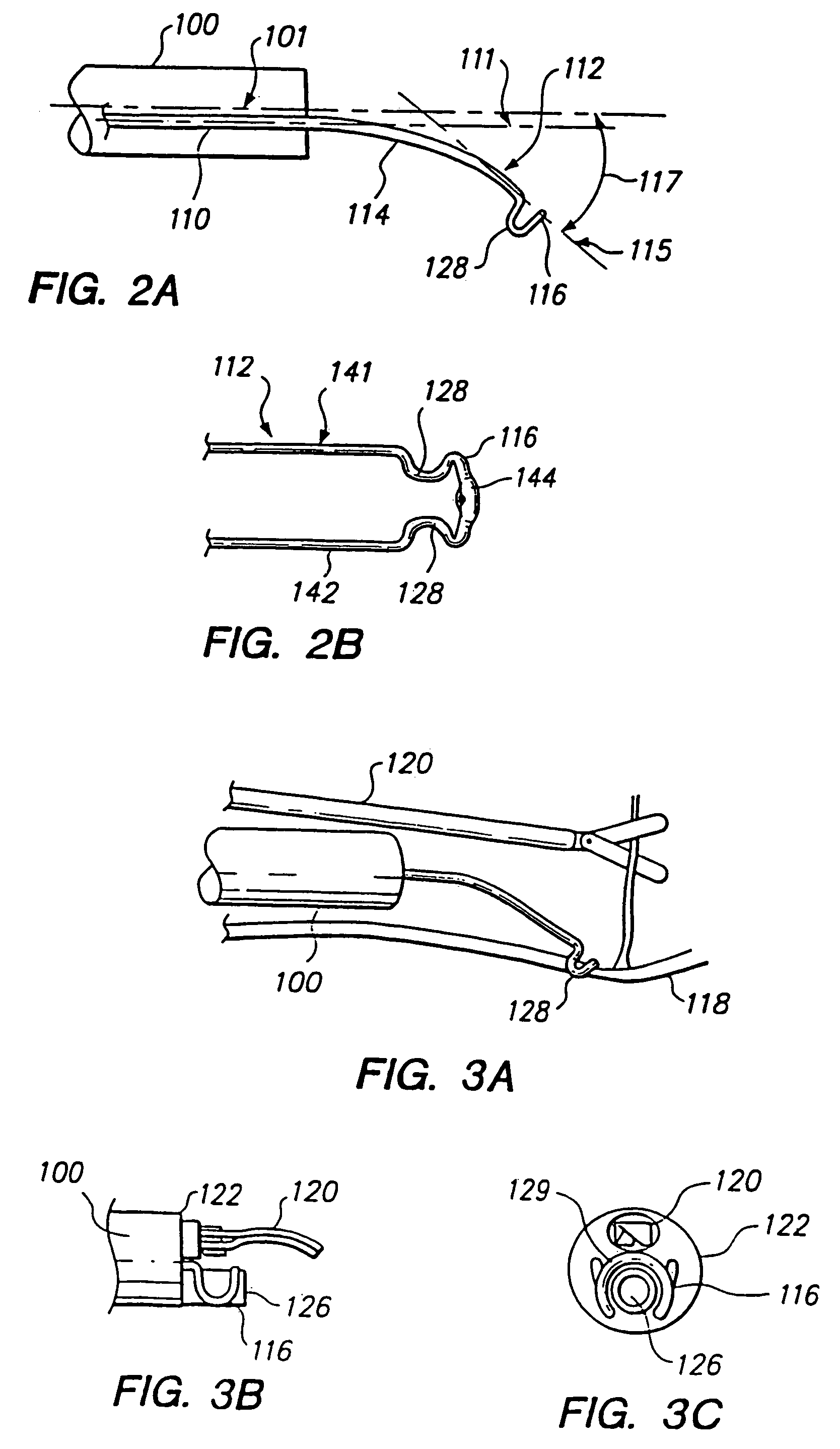Cannula-based surgical instrument
a surgical instrument and cannula technology, applied in the field of cannulas, can solve the problems of increasing the length and risks of the operation, the endoscope lens is subject to the adverse conditions described, and many surgical procedures cannot be performed using a blunt dissection tip, so as to achieve the effect of reducing the risk of surgery, and accurate spraying
- Summary
- Abstract
- Description
- Claims
- Application Information
AI Technical Summary
Benefits of technology
Problems solved by technology
Method used
Image
Examples
Embodiment Construction
[0050]FIG. 1 illustrates a perspective view of a preferred embodiment of cannula 100 showing retractor 112 in an extended position. Cannula 100 includes an outer housing 102 of bioinert material such as polymed UD that may be approximately 12″ to 18″ in length. The proximal end of the cannula 100 is disposed in handle 104 that includes a button 106 which is coupled to retractor 112 for controlling the translational movement of retractor 112, as described in more detail below.
[0051]The distal end of the cannula houses a retractor 112, and optionally an endoscope 126 and a surgical tool 120, described below. FIG. 2a illustrates the retractor 112 in more detail. In one embodiment, retractor 112 is formed of resilient wire which has a smooth bend intermediate to a first portion 110 and a second portion 114 of the retractor. The retractor 112 is described as having two portions for ease of description, although the retractor 112 may be formed as an integrated structure. However, retracto...
PUM
 Login to View More
Login to View More Abstract
Description
Claims
Application Information
 Login to View More
Login to View More - R&D
- Intellectual Property
- Life Sciences
- Materials
- Tech Scout
- Unparalleled Data Quality
- Higher Quality Content
- 60% Fewer Hallucinations
Browse by: Latest US Patents, China's latest patents, Technical Efficacy Thesaurus, Application Domain, Technology Topic, Popular Technical Reports.
© 2025 PatSnap. All rights reserved.Legal|Privacy policy|Modern Slavery Act Transparency Statement|Sitemap|About US| Contact US: help@patsnap.com



